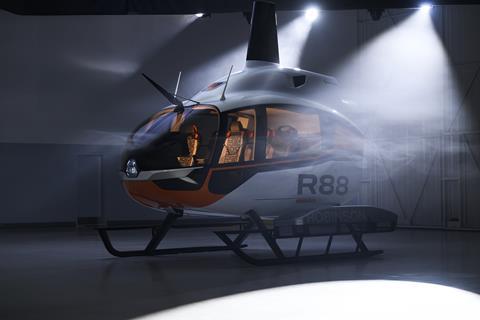
Robinson Unveils R88 – A Game-Changer in Helicopter Innovation
Here's a narrative script for you:
It looks like you uploaded a file. How can I assist you with it? Are you looking for an analysis, summary, or any specific edits?
So, let’s talk about one of the biggest announcements in the aviation world right now—Robinson Helicopter has finally lifted the curtain on its brand-new R88 helicopter. If you’ve been keeping up with industry buzz, you probably already had an idea that something big was coming. But now, we have all the details, and it’s safe to say this new aircraft is making waves.
After nearly 15 years since its last new model, Robinson is stepping into a whole new era with the R88, a powerful, turbine-powered single-engine helicopter with a price tag of around $3.3 million. It’s a step up in every way from the existing R66, which was introduced back in 2010. Designed to be larger and more capable, the R88 is built to handle a wide range of missions, from passenger transport and medical services to aerial firefighting and utility work.
Now, let’s get into the specs. The R88 is powered by a Safran Helicopter Engines Arriel 2W turboshaft engine, producing 1,000 shaft horsepower. It has an impressive payload capacity of over 1,270 kg (2,800 lbs) and a range of up to 650 km (350 nautical miles). That means this helicopter isn’t just about size—it’s also about serious performance.
Also Read:- DK Metcalf to the Steelers – A Bold Move, But Is It the Right One?
- India Clinches Third Champions Trophy with Thrilling Win Over New Zealand
David Smith, Robinson’s CEO, emphasized that this helicopter is built based on extensive customer feedback. Operators wanted more supportability, better parts availability, and a highly configurable aircraft. Robinson answered the call with a design that incorporates Garmin’s G500H TXi avionics suite, touchscreen controls, and a four-axis autopilot. The company also made sure to include a maintenance-friendly approach with the Safran Serenity package, which covers unscheduled removals for five years or 2,000 flight hours—ensuring a smoother operational experience for owners.
One of the standout features of the R88 is its capacity. It can accommodate up to eight passengers plus two pilots, compared to the R66’s four-passenger capacity. And despite its larger size, Robinson remains committed to its signature two-blade rotor system, which has long been known for its affordability, simplicity, and durability. They’ve even made some refinements to the rotor tip shape to reduce noise and improve efficiency.
From a design perspective, the R88 still carries the recognizable Robinson look, but with a few key changes. The engine’s mounting position has led to a raised roofline with additional fairings and cowlings. It also features dual cyclic controls, allowing pilots to fly from either seat while keeping an extra seat available for a passenger.
So, when can we expect to see the R88 take to the skies? Robinson has yet to announce an exact certification date, but Smith is confident that by the end of the decade, the R88 will be flying all over the world. The company is pushing hard to get the first flight completed by early next year, with the goal of delivering over 100 units annually once full production ramps up.
The R88’s closest competitor appears to be the Leonardo AW09, but Robinson’s aircraft offers a more straightforward and cost-effective design. While competitors are exploring more advanced automation and electric propulsion, Robinson is taking a pragmatic approach—focusing on immediate operator needs rather than futuristic tech that might not be ready yet.
Bottom line? The Robinson R88 is set to be a major player in the helicopter market, combining power, reliability, and customer-driven design into a single, game-changing aircraft. It’s big, it’s bold, and it’s definitely one to watch. Keep an eye on this one—because the R88 is about to take the aviation industry by storm.


0 Comments